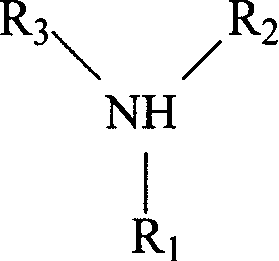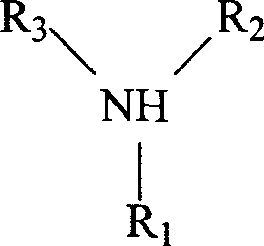Cyclopentaol preparing and refining method
A technology for cyclopentanol and cyclopentene is applied in the field of preparation and purification of cyclopentanol, and can solve the problems of large circulation amount of raw material cyclopentene, low reaction conversion rate and the like
- Summary
- Abstract
- Description
- Claims
- Application Information
AI Technical Summary
Problems solved by technology
Method used
Image
Examples
Embodiment 1~6
[0023] The hydration reaction is carried out in a 500ml autoclave equipped with a stirring device and a heating device. 30 grams of spherical strongly acidic cation exchange resin (main catalyst) with sulfonic acid groups anchored on the surface are packed into a hanging basket, and then the hanging basket is fixed above the stirring paddles. Trialkylamine (co-catalyst), cyclopentene, water and solvent phenol are pumped into the kettle with a peristaltic pump according to the required ratio. After replacing the air in the autoclave three times with nitrogen, the pressure was raised to an absolute pressure of 1.0-3.0 MPa with nitrogen. Start the stirring device and heat up to raise the temperature, control the reaction temperature to 130-180°C, and keep the required reaction time.
[0024] After the reaction was finished, cool to room temperature, discharge, and let stand to separate layers. The oil phase material is heated and distilled under normal pressure, the fraction at...
PUM
 Login to View More
Login to View More Abstract
Description
Claims
Application Information
 Login to View More
Login to View More - R&D
- Intellectual Property
- Life Sciences
- Materials
- Tech Scout
- Unparalleled Data Quality
- Higher Quality Content
- 60% Fewer Hallucinations
Browse by: Latest US Patents, China's latest patents, Technical Efficacy Thesaurus, Application Domain, Technology Topic, Popular Technical Reports.
© 2025 PatSnap. All rights reserved.Legal|Privacy policy|Modern Slavery Act Transparency Statement|Sitemap|About US| Contact US: help@patsnap.com



